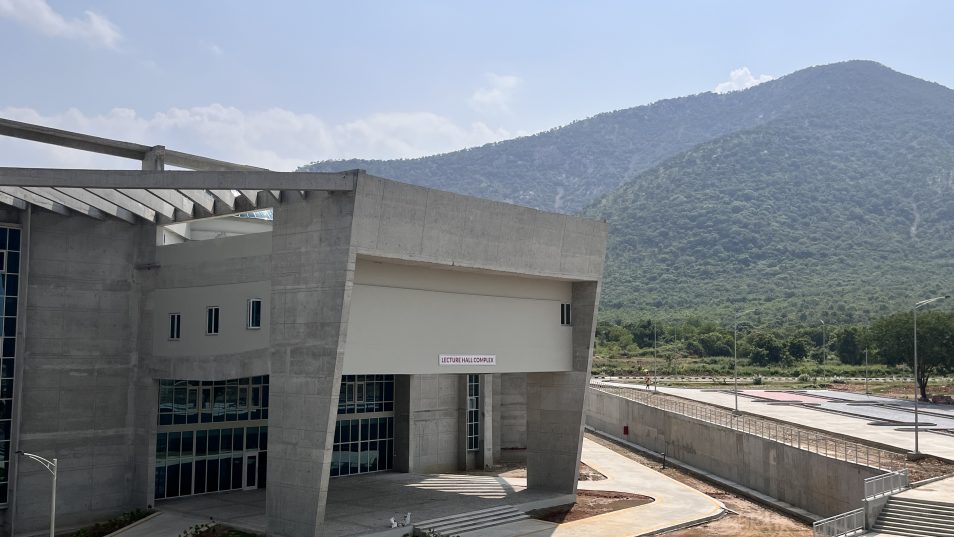At rocket speed towards a science nation? Reforms and challenges in India's higher education sector.
 © Dr. Katja Lasch
© Dr. Katja Lasch
August 2023 saw a perfect sensation: India became the fourth country in the world to successfully land on the moon. This scientific triumph, close to the G20 summit in New Delhi, serves as a cornerstone bolstering India’s ambitions to assume a more prominent role in global politics, particularly as a nation at the forefront of science. For the country’s universities, these ambitions present both an opportunity and a challenge.
In April 2023, India became the most populous country in the world and held the position of the fifth largest economy. The aspirational nation aims to gain further international prominence in the future, not only economically but also in the realm of science policy. With technology and innovation as its driving forces, the Indian government plans to advance the country towards an industrialised nation.
To achieve this, in particular, the higher education institutions- in a broad number, are expected to make a significant contribution and are required to be equipped for the future in terms of teaching, research, and technology transfer. However, many higher education institutions in India find themselves grappling with substantial structural challenges.
The Indian higher education system
With over 44,000 universities and colleges and around 41 million students, India is home to one of the largest higher education systems in the world. Over the last three decades, the higher education sector has seen an exponential growth – alone an increase of over 400 percent since 2001. This is largely propelled by private universities and colleges. The newly established seats in colleges and universities primarily focus on undergraduate studies, with nearly 80 percent of students enrolled at this level. However, this overall rapid expansion is resulting in the establishment of institutions that often only meet minimal teaching standards. As a result, there are significant differences in quality between the relatively small number of universities with strong international affiliations, where cutting-edge research is conducted in specific fields, and a majority of colleges and universities which focus largely on teaching. For example, 35 percent of colleges only offer a single study programme. The persistently low number of master graduates and doctoral students does not meet the demand for researchers, and university lecturers.
Despite the massive expansion of the higher education system, India’s Gross Enrolment Ratio (GER) in tertiary education stands currently at 27 percent. In order to achieve its self-imposed goal for 2035 to provide quality higher education to approximately 50 percent of youth (Age group 18-25), India would need to create nearly 40 million additional seats in universities and colleges in the coming years. In addition, India would need to recruit more than 1.9 million university teachers, while simultaneously raising quality standards in existing institutions. Achieving this mammoth task appears almost impossible, particularly in light of the chronic underfunding of the public higher education sector, where a significant portion of the central government funding is currently directed towards a handful of institutions.
Measures to ensure quality standards in higher education
The Indian government addressed many of the problems outlined above in the National Education Policy (NEP) adopted in 2020, which announced a comprehensive reform of the higher education system. In the medium term, the higher education sector is to be consolidated into 15,000 larger multidisciplinary institutions. There are also plans for establishing a clear structure of the previously confusing higher education landscape, with a uniform classification into research universities, teaching universities, and autonomous colleges, along with greater autonomy for universities. With the upcoming introduction of a national credit transfer system and the adoption of a general qualifications framework, the first steps towards establishing uniform standards have been taken since 2022. Last but not the least, the NEP calls for increasing the internationalisation of higher education institutions to develop them further, for example, by establishing double degree programmes. In the meantime, over 16,000 universities and colleges have undergone the voluntary accreditation process of the National Assessment and Accreditation Council (NAAC), and more than 5,500 institutions participated in the National Institutional Ranking Framework (NIRF) in 2023. The insights obtained from these institutional evaluations provide a first basis for assessing the quality of the participating higher education institutions. Nevertheless, even with these steps, it remains uncertain how the required number of new seats in university and colleges will be created and how the quality standards at individual higher education institutions can be raised.
Expansion of university research
At 0.64 percent of GDP in 2021, India’s research expenditure is relatively low compared to other technologically advanced countries like Germany, Israel, or the USA. However, in absolute terms, research expenditure has doubled over the past decade and currently amounts to approximately 59 billion euros. The largest share of research funding comes from the public sector. With a share of about nine percent of the overall research expenditure, universities continue to lag behind other public funded research institutions (44 percent). Cutting-edge research in India has so far been concentrated at a few selected universities and research institutions. Additionally, priority is given to selected research topics such as quantum research, green hydrogen, artificial intelligence, and space travel in the so-called “national missions”.
In August 2023, the establishment of a National Research Foundation (NRF) was adopted, which is similar to the German Research Foundation. The NRF aims to broaden the base of research across all publicly funded universities and colleges. It is expected to strengthen research capacities at Indian higher education institutions and ease the access to research funding based on uniform criteria and processes. Additionally, a postdoctoral programme is also foreseen. The NRF has a funding volume of around 5.6 billion euros for these initiatives over the next five years. It is anticipated that 76 percent of the funding will be sourced from the research industry and private philanthropists. While the establishment of the NRF marks a crucial step towards expanding research funding, a big question mark remains over the funding resources, particularly given the fact that the Indian industry currently shoulders only 36 percent of India’s research expenditure.
Structures for technology transfer
In addition to teaching and research, the Indian government is also bolstering technology transfer at higher education and research institutions, with a focus on spin-offs from research and science. India hosts the third-largest startup system in the world with more than 100,000 startups, 27,000 of which operate in the technology sector. This success can be partly attributed to systematic funding for the establishment of technology business incubators (currently numbering around 260) at universities and research institutes. As a result, India’s higher education institutions are considered key drivers of innovation through technology-based startups. A number of programmes funded on federal level are available to support incubators and startups. These are mainly implemented by the Biotechnology Industry Research Assistance Council (BIRAC), the Department of Science and Technology (DST), and the Atal Innovation Mission (AIM). Additionally, state governments also contribute to this sector. A look at the Innovation Ranking of universities and colleges, which includes participation from over 1,200 institutions, reveals that it is primarily the public-run, technically oriented universities, such as the Indian Institutes of Technology (IIT), as well as private universities and colleges that occupy the top positions. The emphasis that India places on supporting this sector is also evident in the recently presented draft of a deep tech startup strategy. This strategy aims to specifically promote India’s own knowledge-based economy and technological growth, ensuring the country’s global competitiveness.
Preliminary conclusion
India is undertaking numerous initiatives and reforms to prepare its higher education institutions for the future. These efforts encompass teaching, research, and technology transfer. Unlike in the past, the focus now lies on enhancing the entire system, extending beyond the major and well-known research centres like Delhi, Mumbai, and Bangalore. However, given the sheer size of the system, fundamental structural challenges and limited financial resources, achieving swift implementation in many areas remains uncertain. This is nevertheless necessary for achieving ambitious self-imposed goals in the field of higher education and research, both in terms of domestic and foreign policy.

AUTHORDr Katja Lasch
Director, DAAD Regional Office New Delhi and Director, German Centre for Research and Innovation (DWIH) New Delhi since October 2019.
